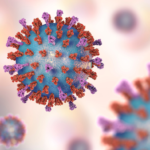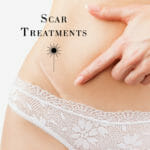
There are many hair changes attributable to anticancer therapies. In approximately 65% of patients treated with chemotherapy and in up to 100% of areas treated with radiotherapy can lead to hair changes.
These can manifest as hair loss (alopecia), pigment changes, textural changes, and changes in hair cycle.
Hair Loss
Chemotherapy induced hair loss typically begins weeks after the first dose of chemotherapy and represents what is called an anagen effluvium, predominantly in areas of increased friction on the scalp. Eyebrows and eyelashes may also be affected. Usually asymptomatic, it can be associated with itch or pain. Two to six months after the chemotherapy has finished, the hair typically begins to regrow, although the hair loss can be persistent.
(more…)



 Thoughts on COVID-19
Thoughts on COVID-19
 Temporary Closure
Temporary Closure A recent study on SPF published in the
A recent study on SPF published in the  Scar treatment can be challenging and requires a multi-dimensional approach in order to be successful. A scar can be the centre of attention but can also be a source of annoyance. For some individuals, scars are a part of who they are, whereas for others they are intrusive and cause insecurity. They can be caused by a variety of reasons such as acne scarring, trauma, and surgery.
Scar treatment can be challenging and requires a multi-dimensional approach in order to be successful. A scar can be the centre of attention but can also be a source of annoyance. For some individuals, scars are a part of who they are, whereas for others they are intrusive and cause insecurity. They can be caused by a variety of reasons such as acne scarring, trauma, and surgery.
